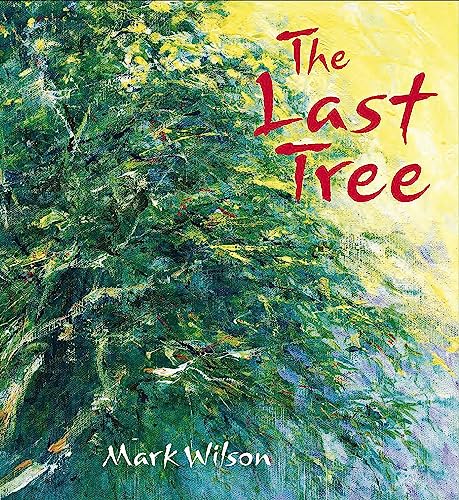Mark Wilson’s reputation as an author-illustrator has been made by his excellence with war themes, but his early sensitivity in depicting the natural world established him as a picture book maker of note. He reveals on his website that this book was published as a companion to his first book, ‘Prayer for the Animal’.
The strength of ‘The Last Tree’ lies in the depiction of natural life: the theme of almost-extinction explored in a simplified life cycle of a tree. The huge eucalypt spreads its canopy across the cover, front and back, with the reader positioned on the forest floor to appreciate its beauty. Opening to the title page, the seed pod that will ensure the tree’s succession and perpetuity is set in a frame. This pictured reassurance of the species also evokes a museum display in its sepia scratchiness.
This artist works in a variety of mediums and uses them skilfully for both broad strokes and essential detail. The text progresses across the centuries and the seasonal markers, including disasters, which the tree has survived. Human impact on the forest is implied in the encroaching built environment, but not explicitly pictured. A fine painting of Indigenous people alongside a thylacine as markers of the historical past of the forest is spoilt by the implication to the reader that all are extinct. The portrait of the scarlet robin feeding her young amid dying branches against the looming twilight of a city skyline is a superb example of his fine drawing and paint work.
Wilson says, ‘Ninety percent of Australia’s old-growth forests have disappeared in the last 200 years. ‘The Last Tree’ is set in the old growth forests of East Gippsland, Victoria, where I grew up.’ This note in the book will affirm young writers and artists – letting them know that the roots of creativity are there early.

